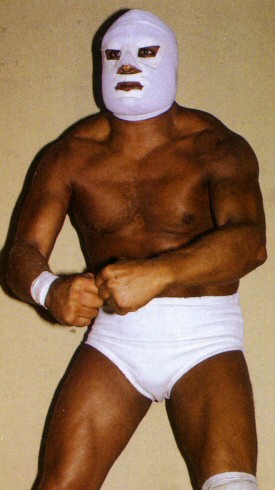Dr. Wagner
Profile
| Wrestling Observer Hall Of Fame Member |
|---|
Biography
Dr. Wagner, real name Manuel González Rivera, was born on April 13th, 1936 (usually announced as 1941, which was his "worked" birth date) in Zacatecas, Zac. However, he grew up and lived the rest of his life in Torreón, Coah., so he considered himself a "Lagunero".
He trained for lucha libre in Guadalajara's "Gimnasio Hércules", which was owned by Roy Velasco. Back in those days, he would wake up at 5 AM and work for five hours at the "Corona" market, loading and unloading trucks. After a lot of hard work, Manuel debuted on July 16th, 1961 in Guadalajara, Jal. as Centella Negra (Black Lightning Spark), teaming with Torbellino Negro (Black Whirlwind) against Pancho Ramírez and Monje Loco (Mad Monk).
The name did not last long, as in 1962, Mexican-Jewish promoter Elías Simón, who ran in the North of the country, suggested he should switch names to El Hijo del Médico Asesino. Rudo doctor gimmicks were pretty popular back then in México and he liked the idea but not the name. Médico Asesino had died in June, 1960 and he was not happy with the idea of being the fake junior of a legend who had died in his prime as he wanted to build his own legend. He was at home, either listening to a Richard Wagner composition or reading a book about him, when he came up with the name of Dr. Wagner.
González made his debut as Dr. Wagner at the legendary Arena Isabel in Cuernavaca, Mor. in the main event against Rubén Juárez. By 1964, he already had a pretty good reputation in the Northern Mexico region through working for Ciclón Veloz in Monterrey, and his name was already becoming well known as somebody who was ready to get a chance to succeed in Mexico City and who had all the tools to do so.
EMLL contacted him and he had his first match at Arena Coliseo on February 28th, 1965 where he teamed with Jorge Allende. He immediately created a good impression, as he was a natural light heavyweight (175 cm., 93 kg.) who could work, had an incredible in-ring presence, and had a great gimmick. He was actually not the first wrestler to use the Dr. Wagner name in Mexico, as on September 28th, 1941 a different Dr. Wagner debuted at Arena Mexico, defeating Caballero Lee. The first Wagner only wrestled a few more times before disappearing.
His first major singles win was on July 17th, 1966 when he defeated popular heavyweight Raúl "Moritas" Reyes in the "mask vs. hair" main event of an Arena Mexico show but he became a main event superstar as a tag team wrestler.
In the early months of 1966, he joined forces with Ángel Blanco as "La Ola Blanca" (The White Wave). Both men dressed in all white costumes and within a matter of months they became the second best working tag team in the country, behind only René Guajardo and Karloff Lagarde. When the "Rebeldes" broke up later that year, they were clearly the best in the country.
Blanco and Wagner were the epitome of old school rudos, as they were mean brawlers who would punch and kick their opponents to death, but would dominate and finish them with polished submission work. They had a knack for getting the crowd to hate them, even though they were two of the coolest rudos of the era. They were considered cool because they looked like such major superstars in posed pictures celebrating after the matches or in studio shots for the magazines, with Wagner wearing his full doctor outfit while Angel boasted his impressive physique clad in his white cape.
The tag team was put over strong at first, going over high caliber teams such as Ray Mendoza and Rayo de Jalisco, Mil Máscaras and Felipe Ham Lee, and Dory Dixon and Raúl Reyes. In December, 1966 they defeated El Santo and Rayo de Jalisco for the National Tag Team titles. To earn their shot at the champions, they had won a tournament which had spanned through several weeks, and featured every major team of the era. This was seen as a major win as Santo and Jalisco were considered pretty much an "unbeatable" team back then, and had gone through successful title defenses against teams like Mil Máscaras and Black Shadow, and René Guajardo and Karloff Lagarde (in what was a weird case of National champions defeating the World champions).
They were considered the 1966 tag team of the year by the Box y Lucha magazine, as well as EMLL's internal awards, where Wagner also captured "revelation of the year". Such a promotion made them major draws all around the country in their first year as a tag team, even though they weren't thought of as huge stars like Mendoza, Máscaras, Santo, Jalisco or Guajardo.
When it looked like things couldn't get better for Wagner and Blanco, a "rookie" El Solitario joined the trio. It was not the first time La Ola Blanca had been a trio, as Wagner and Blanco had teamed in the past with El Enfermero but the alliance did not last long, as Enfermero was considered washed up and couldn't keep up with the working style of Blanco and Wagner. Now things were different. Solitario was way too good for somebody with his level of experience, as he had an explosive, high-flying style, tons of charisma, and was a rudo with a lot of intensity. When the "Ola Blanca" and Solitario were together, everybody knew they were seeing something special.
By 1969, the trio was the hottest act in the country, save for El Santo and Blue Demon, and they were also three of the top ten workers in the country. Things became even hotter when Blanco and Wagner turned on El Solitario, starting up one of the most legendary feuds in the history of lucha libre, and also marking the first step for the legend of Solitario as one of the five biggest stars ever in Mexico.
During this time, Wagner kept an insane schedule. While the Mexican wrestlers don't have the travel problems that US wrestlers had in the 80's, the toll of the schedule on the mind and body was probably similar. Wagner would wake up at 4:30 AM, run for an hour and then go to the gym for three hours. He would then have breakfast and get ready to go to the arena, most of the time riding on an uncomfortable truck, or in a car with as many as four other wrestlers, then wrestle in a hard ring, sometimes doing double shots, and finally go back home.
The grueling schedule would take a terrible toll on the wrestlers' bodies, and in an era where they didn't have the painkillers that are available now, Wagner's painkiller of choice was alcohol. Many years after retiring he admitted several times in interviews that he used to have a major drinking problem but he was proud to say that he was able to leave alcohol behind and carry on a clean lifestyle.
The first half of the 70's was especially good for Wagner and Blanco. Blanco lost his mask to Solitario in 1972 but he remained a major star for years. The Blanco/Wagner feud with Solitario was still a big draw in every arena in the country, even more so when Solitario would team with somebody like Santo or Rayo de Jalisco. Later on, Gran Markus, also wearing a white mask and trunks, joined the La Ola Blanca tag team and again turned it into a trio.
Alongside his tag team success, Wagner had a great singles career. On March 16th, 1973 he defeated a very young Enrique Vera to win the National Light Heavyweight title. It was his first major singles title win, as back on April 11th, 1969 he had lost to Raúl Mata in the finals of a tournament for the same vacant belt. In those days title reigns would last many months, even several years but Wagner never lost the strap, as he vacated it on September 22nd, 1974 when he won a tournament to capture the NWA World Light Heavyweight championship. As NWA champion he defended the belt against stars like Alfonso "Tanque" Dantés (the eternal NWA World LHW champ), Goro Tanaka, Gemelo Diablo I and even Ángel Blanco.
Wagner and Blanco debuted in Southern California in 1974 and had an NWA Americas Tag Team title reign defeating Porkchop Cash and Manny Soto in Los Angeles on August 30th, 1974. However, they lost the belts the following day to Butcher Brannigan and Man Mountain Mike in Hollywood. He also was Latin America's tag team champion, this time teaming with El Enfermero.
On May 1st, 1975, Wagner teamed with El Halcón to defeat Los Gemelos Diablo (Mexican Twin Devils of L.A. and WCW fame) in a double mask vs. mask match at Plaza Mexico. This would be one of his biggest mask wins but the most important mask he ever won was the one of Septiembre Negro, in front of a sold out crowd of around 17,000 at the Palacio de los Deportes on September 19th, 1982.
Negro was Vick Amezcua, brother of WON Hall of Famer Alfonso Dantés and uncle of current superstar Apolo Dantés, whose name was a reference to the Black September terrorist group that had kidnapped and killed eleven members of the Israeli wrestling team during the 1972 Summer Olympics in Munich. Wagner and Negro had to face each other after losing in the finals of a five team Torneo de la Muerte where the losers would advance to the next round and the final losers would face each other. The other teams were Canek/As Charro, Solar/El Solitario, The Kiss/Rayo de Jalisco and Kato Kung Lee/Kung Fu.
Other masks Wagner captured during his career were the ones of Super Star (09/20/74), Katastrofe and Robot C3. He won the latter mask at El Toreo on March 16th, 1980, teaming with El Texano, and also taking the hair of Astro Rey (Kahoz). Robot C3 was a character based on C3P0 from Star Wars, who used to team with Robot R2 (El Rebelde, Mano Negra's dad). Other than these, he also captured the hair of Adorable Rubí Rubalcava.
During the latter half of the '70s, Wagner and Blanco mostly worked at El Toreo and the other UWA arenas, just like every major star of the era, because of the better payoffs. Because of his name and experience, and the quality of his work, he was one of the centerpieces of the promotion during the early years. Wagner dropped the NWA World Light Heavyweight belt, an EMLL controlled belt, at Arena Mexico on February 27th, 1976 to Adorable Rubí Rubalcava, a gay act that the Empresa gave a major push to but which, because of the different crowd they had, was a major flop. But on April 11th he defeated Alfonso Dantes for the National Light Heavyweight strap in Dantes' hometown of Guadalajara.
From then on it became a UWA belt until EMLL regained control of it more than ten years later and Wagner was presented as a "fighting champion", taking on all comers. One major defense during that run was on June 19th, 1977 at the Palacio de los Deportes in Mexico City, when he scored a clean victory over the promotion's new star, Canek. He eventually lost the belt to Canek, who defeated him on January 15th, 1978 at El Toreo. That Sunday morning, Canek had earned his biggest career win up to that point and was seen as a major threat until seven months later when he defeated Lou Thesz for the UWA World Heavyweight belt and everybody realized he was the new real deal.
In November, 1979, Wagner had a third National Light Heavyweight title reign, albeit an insignificant one, as he only held the title for nineteen days, acting as a bridge between Astro Rey and Enrique Vera.
By this point, Wagner's reputation was that he used to be one of the most complete workers in the country but was now getting passed up by the younger stars because most of the time he'd get away by not doing much and mostly working the crowd with his posing and mannerisms. Although, just like his son, Dr. Wagner Jr., he also had a reputation of being able to deliver the goods when it was time to do so.
Around this time he also had a short tecnico run as he teamed up with Anibal and El Solitario, to go against Angel Blanco. He was no longer a regular main event star at Arena Mexico or El Toreo but that also gave him a chance to work more in other large cities, such as Monterrey or Nuevo Laredo, where he was the main event in feuds with Anibal or El Solitario which drew very well.
The Solitario feud that had been built for decades reached its climax on December 1st, 1985, as they faced each other in a mask vs. mask match that sold out the 15,000 seat Plaza de Toros Monumental de Monterrey, drawing the largest and most profitable gate up to that point in the city's history. The match, which was refereed by Ray Mendoza, was taped for TV and it was such a great match that it still holds up as a quality bout over twenty years after it happened.
He later had a nice short run as a maskless rudo and for a short time it revived his main event career at El Toreo until April 27th, 1986 when he was involved in one of the most tragic episodes in wrestling history. That Sunday morning there had been a matinee show in Nuevo Laredo, so Carlos Elizondo, who had taken over the successful Monterrey circuit from René Guajardo, paid for a car so the wrestlers from that show could also wrestle at his weekly bullring card. That match was going to be the "official debut" of Dr. Wagner Jr., who was going to team with his father against Angel Blanco and Angel Blanco Jr. (wrestler Rey Salomón, who was married to Blanco's daughter).
Wagner was driving the car with Angel Blanco, Solar, Mano Negra and Jungla Negra as passengers. Less than half a mile from the arena they almost ran over a teenage boy who was riding a bicycle. Nothing happened in the end but it caused them to lose a lot of time. Wagner had to step on the accelerator and when the rear left tire exploded, they lost control and collided with a truck. Solar, Negra and Jungla, who were in the back seat, only suffered minor scratches, but Blanco died on impact, and Wagner Sr. was said to be wheelchair bound for life. Keep in mind that this was just 20 days after the death of Solitario, who was his other best friend.
The Doctor needed immediate surgery after the accident, where his vertebral column was fixed with the help of steel wires. He was told he could never walk on his own again, never mind wrestle, but years later was able to learn to walk with the use of a cane. When his condition had improved, he got a day job as a taxi driver, which must have been painful considering the state of his back. When he was driving, he would always ask his passengers if they liked lucha libre and if they were aged 30-40, he'd always tell them "When you were a kid, I was your idol because I was the Dr. Wagner". Wagner owned real estate, as well as a gym, where he was a maestro.
He always remained in touch with lucha libre, as he kept watching the product (which he enjoyed, but much like the rest of the old timers, hated that it had turned into a freak show with less emphasis on old school matwork) and was really proud of his sons, Dr. Wagner Jr. and Silver King. He also attended whenever there was a tribute show for him, such as July 2nd, 1995 at Arena Mexico or October 4th, 2003 at a Unidad Deportiva Oriente in San Nicolás de los Garza, Nuevo León. There is a funny story from that show, as Silver King (who had been "missing" for months, but he was actually working as Black Tiger) was announced as appearing on that show, but he ended up working as Black Tiger. After the match he gave his father a big long hug. Of course, most of the crowd didn't know what was going on because most people didn't realise who was under the Black Tiger mask.
Most recently, he'd been involved in an angle where he, walking with a cane, supposedly came down the Arena Mexico ramp to help his son against Canek, but in reality, Silver King was the one playing the role.
In 2004, Wagner had a tough battle, as he needed back surgery again as the steel wires in his back were pinching nerves in such a way that he was continually in terrible pain and there was fear it could cause gangrene. After surgery his leg mobility improved and he was no longer in pain.
His death on the evening of Sunday, September 12th, 2004, after suffering a heart attack in his home in Torreón, Coah., came as a shock to many, because even though he was old, he had not been sick and he was in good spirits. His funeral services were attended by a number of local wrestlers, plus Stuka, El Hijo del Santo, Mil Máscaras, El Rebelde, and others. During his burial, Dr. Wagner Jr. was said to be looking sad and serious but calm, while Silver King was completely broken down.
Wagner is survived by his wife, Magdalena Barrón; three sons, Oscar, César (Silver King) and Dr. Wagner Jr.; and a daughter, Mayra.
Biografia
El hombre que le dio inmortalidad a Dr. Wagner se llama Manuel Gonzales Rivera. Nacio el 13 de Abril de 1936 (aveces anunciado como 1941). Zacatecas fue la tierra que lo vio nacer pero crecio en torreon coahuila. Es entonces que se considera "LAGUNERO"
En sus inicios entreno en el "Gimnasio Hercules" en Guadalajara. Este gimnasio era propiedad de el gran Roy Velasco. En esos dias Manuel se levantava a las 5 en la madrugda y trabajaba por 5 horas en el mercado "corona". Haciendose experto en mover carga de un lugar a otro Manuel debuto como Dr. Wagner el 16 de julio en una acalorada noche en la Guadalajara. Centella Negra se hizo llamar esa noche y al hacer pareja con Torbellino Negro contra Pancho Ramirez y Monje loco se llevaron una vicoria que predecia muchas en el haber de este hombre.
El Nombre de Centella Negra no duro mucho tiempo. En 1962 el promotor judio Elias Simon el cual se encargaba de los territorios mexicanos del norte hizo la sugerencia que se cambiara el nombre. La identidad de "el hijo del medico asesino" fue la que se le pidio que asumiera. Los personajes de doctores malignos eran populares en esas epocas y a Manuel la idea le gustaba pero el nombre no. Medico asesino murio en junio de 1960 y Manuel no estaba deacuerdo con tomar el nombre de una leyenda que murio en sus dias mas importantes puesto que el queria crear su propia leyenda. Fue entonces cuando Manuel creo el personaje legendario de "DR. WAGNER".
Manuel hizo su debut como "DR. WAGNER" en la Arena Isabel en Cuernavaca, Morelios. En la lucha estelar de esa noche en contra de Ruben Juarez. En 1964 ya habia acumulado muchas luchas y tenia buena reputacion en el Norte de Mexico bajo el mando de Ciclon Veloz en Monterrey. El personaje que Manuel Gonzales creo ahora conocido como "DR WAGNER" era una de las atracciones luchisticas mas seguidas atraves del pais. Todo parecia indicar que su carrera se dirigia a ciudad de mexico en las grandes carteleras, no solo por su gran carisma, sino por su gran talento luchistico.
EMLL lo contrato y tuvo su primera lucha en la Arena Coliseo el 28 de Febrero de 1965 junto a Jorge Allende. Inmediatamente fue aceptado por la gente ya que era un virtuoso en su trabajo como luchador. Para un hombre de su estatura y peso era muy raro encontrar a una persona que dominara la lucha libre y tuviera una preciencia mas que creible adentro del cuadrilatero. Manuel no fue el primer hombre en usar este nombre puesto que existio otro "DR WAGNER" el 28 de septiembre de 1941, el cual debuto en la Arena Mexico. Esa noche vencio a Caballero Lee.
Su primer Campeonato luchando solo lo consiguio el 17 de julio de 1966. Vencio a el entonces campeon Raul "moritas" reyes en una lucha de "mascara vs cabellera" en una de esas noches legendarias de la gran Arena Mexico. A comienzos de 1966 junto fuerzas cone "el angel blanco" y se creo "LA OLA BLANCA". Sus atuendos eran todos en blanco y en solo meses se convirtieron en la segunda pareja mas cotizada en el pancracio mexicano. Solo detras de RENE GUAJARDO y KARLOFF LAGARDE. Cuando la pareja de "los rebeldes" partio caminos fue que 'LA OLA BLANCA" se hicieron los numero uno.
Luchas de apuestas record
| Date | Apuesta | Winner(s) | Loser(s) | Arena and/or Place |
|---|---|---|---|---|
| ??/??/?? | hair | Dr. Wagner | Ruben Juarez | unknown |
| ??/??/?? | hair | Dr. Wagner | El Vikingo | unknown |
| ??/??/?? | mask | Dr. Wagner | Bufalo Negro | Irapuato, Guanajuato |
| ??/??/?? | mask | Dr. Wagner | Katástrofe | unknown |
| ??/??/?? | hair | Dr. Wagner | Adorable Rubí | Arena México - Mexico City |
| ??/??/?? | hairs | Dr. Wagner & Ángel Blanco | Pantera Negra & Enrique Vera | unknown |
| 65/09/24[1] | hair | Dr. Wagner | Manuel Robles | Arena Coliseo Guadalajara |
| 66/07/12 | hair | Dr. Wagner | Raúl Reyes | unknown |
| 1974/09/20 | mask/hair | Dr. Wagner & Ángel Blanco | Enrique Vera & Superstar | Arena México - Mexico City |
| 1974/12/13 | hair | Dr. Wagner & Ringo Mendoza | Ángel Blanco & Coloso Colosetti | Arena México |
| 75/05/01 | masks | Dr. Wagner & El Halcón | Los Gemelos Diablo | Plaza Mexico - México City |
| 79/01/28 | hair | Dr. Wagner | Ángel Blanco | El Toreo - Naucalpan, Mexico State |
| 80/03/16 | mask/hair (1) | Dr. Wagner & El Texano | Robot C-3 & Astro Rey | El Toreo - Naucalpan, Mexico State |
| 82/09/19 | mask (2) | Dr. Wagner | Septiembre Negro | Palacio de los Deportes - Mexico City |
| 84/02/19 | mask | Dr. Wagner | Catastrofe | G2, Mexico City |
| 85/12/01 | mask | El Solitario | Dr. Wagner | Plaza de Toros Monumental - Monterrey, N.L. |
| (1) Finals of a losers advance tag team tournament; (2) Finals of a ruleta de la muerte | ||||
- ↑ Lucha Libre 103
Gallery
 |
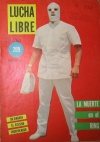 |
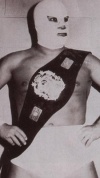 |
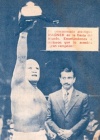 |
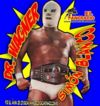 |
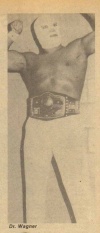 |
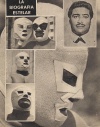 |
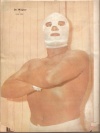 |
 |
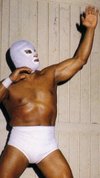 |
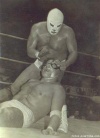 |
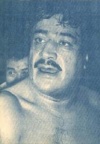 |
 |
 |
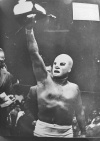 |
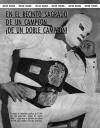 |
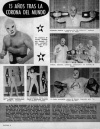 |
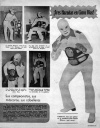 |
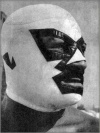 |
 |
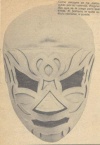 |
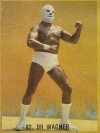 |
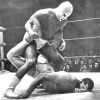 |
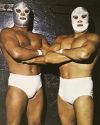 |
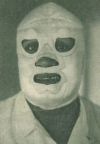 |
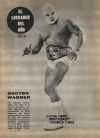 |
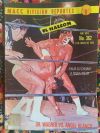 |
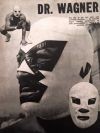 |
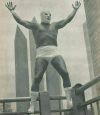 |
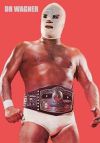 |
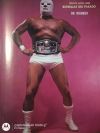 |
 |
 |
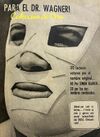 |
